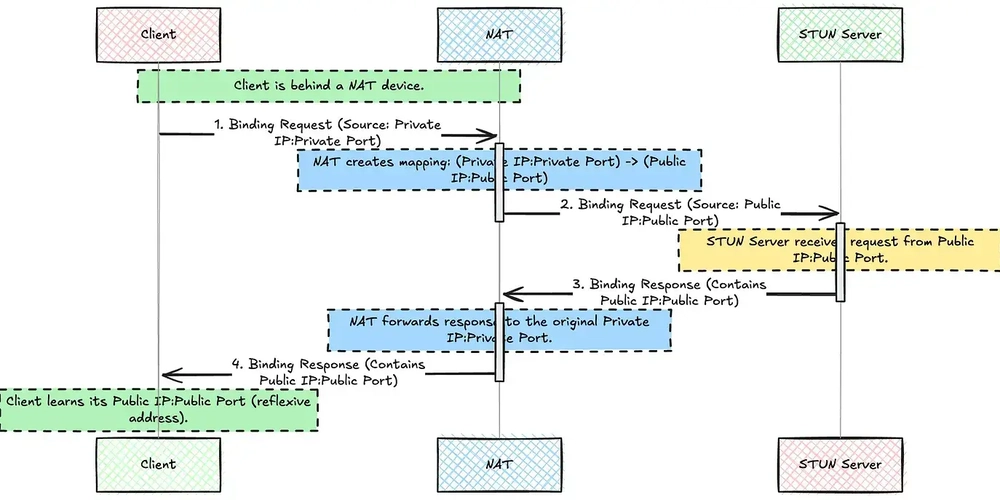Dev
1M
80

Image Credit: Dev
What is a Stun server?
- STUN servers help devices behind NAT discover their public IP addresses and port numbers.
- NATs hide private IP addresses; STUN enables direct peer-to-peer connections by providing address discovery.
- STUN does not route or relay traffic between peers; TURN servers are used if direct connections fail.
- STUN sends binding requests to a server to learn reflexive transport addresses of clients.
- UDP hole punching, facilitated by STUN, allows peers behind NAT to establish direct connections.
- STUN has limitations, such as not working with symmetric NATs or restrictive firewalls.
- TURN servers step in when STUN fails, providing a relay for signalling and media traffic.
- TURN servers ensure reliable connectivity, and are part of the ICE framework for establishing connections.
- ICE first tries direct paths using STUN, switching to TURN if necessary for successful connections.
- STUN is vital for enabling technologies like WebRTC and VoIP by allowing devices to communicate across networks.
Read Full Article
4 Likes
For uninterrupted reading, download the app